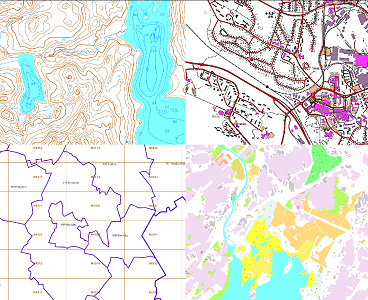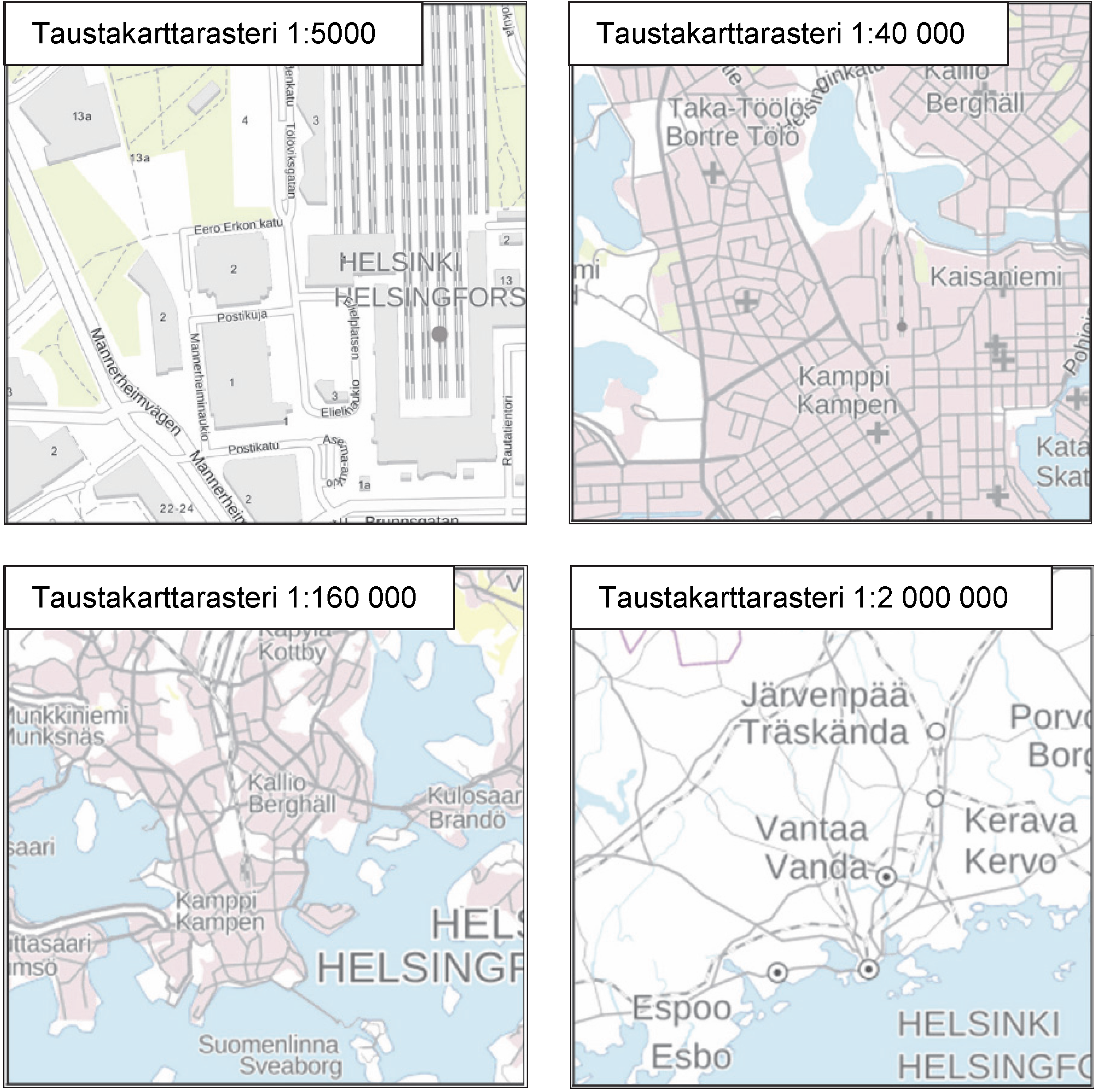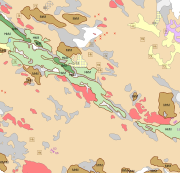20000
Type of resources
Available actions
Topics
Keywords
Contact for the resource
Provided by
Years
Formats
Representation types
Update frequencies
status
Scale
Resolution
-
The EMODnet (European Marine Observation and Data network) Geology project collects and harmonizes marine geological data from the European sea areas to support decision making and sustainable marine spatial planning. The partnership includes 39 marine organizations from 30 countries. The partners, mainly from the marine departments of the geological surveys of Europe (through the Association of European Geological Surveys-EuroGeoSurveys), have assembled marine geological information at various scales from all European sea areas (e.g. the White Sea, Baltic Sea, Barents Sea, the Iberian Coast, and the Mediterranean Sea within EU waters). This dataset includes EMODnet seabed substrate maps at a scale of 1:20 000 from the European marine areas. Traditionally, European countries have conducted their marine geological surveys according to their own national standards and classified substrates on the grounds of their national classification schemes. These national classifications are harmonised into a shared EMODnet schema using Folk's sediment triangle with a hierarchy of 16, 7 and 5 substrate classes. The data describes the seabed substrate from the uppermost 30 cm of the sediment column. Further information about the EMODnet Geology project is available on the portal (http://www.emodnet-geology.eu/).
-

The themes of the Topographic database and Topographic map raster series (scale 1:10,000) have been compiled into seven theme entities, theme rasters, required by the Inspire directive: hydrography, elevation, traffic network, land use, land cover, place names and buildings. In addition to the above, the theme rasters also include the municipal division, road names and map sheet division as separate themes. The theme rasters have not been implemented according to the imaging technology defined in the Inspire directive. They will be produced later. The product belongs to the open data of the National Land Survey of Finland.
-

The Background map is a dataset product series in raster format that depicts the whole of Finland and that is meant for web use as a background material for thematic data. Its key objects are road names, roads and railways, buildings and constructions, administrative borders, geographical names, waterways, land use and addresses of buildings (from the Digital and Population Data Services Agency). The product belongs to the open data of the National Land Survey of Finland.
-
The EMODnet (European Marine Observation and Data network) Geology project collects and harmonizes marine geological data from the European sea areas to support decision making and sustainable marine spatial planning. The partnership includes 39 marine organizations from 30 countries. The partners, mainly from the marine departments of the geological surveys of Europe (through the Association of European Geological Surveys-EuroGeoSurveys), have assembled marine geological information at various scales from all European sea areas (e.g. the White Sea, Baltic Sea, Barents Sea, the Iberian Coast, and the Mediterranean Sea within EU waters). This multiscale dataset includes EMODnet seabed substrate maps at a scale of 1:1 500, 1:5 000, 1:10 000, 1:15 000, 1:20 000, 1:25 000, 1:30 000, 1:45 000, 1: 50 000, 1:60 000, 1:70 000 from the European marine areas. Traditionally, European countries have conducted their marine geological surveys according to their own national standards and classified substrates on the grounds of their national classification schemes. These national classifications are harmonised into a shared EMODnet schema using Folk's sediment triangle with a hierarchy of 16, 7 and 5 substrate classes. The data describes the seabed substrate from the uppermost 30 cm of the sediment column. Further information about the EMODnet Geology project is available on the portal (http://www.emodnet-geology.eu/).
-

The Superficial deposits 1:20 000 / 1:50 000 data include material produced during the period 1972-2007 for land use planning, for the mapping and inventory of the natural resources as well as for environmental management and for scientific research. The main mapping scale has been 1:10 000. The data contains a sediment as a basal deposit at a depth of one metre. The minimum size of the basal deposit polygon is two hectares, with islands, mire and field enclosures, as well as geologically significant sites as an exception. The 0.4-0.9 m thick layers are described as overlying the basal deposit and, in geologically or economically significant cases, such layers could be even thicker. The minimum polygon size of the overlying deposit is usually four hectares. Thin covering layers under 0.4 m in thickness, which are difficult to delimit but effect an area of at least four hectares, are displayed as point data. Besides the deposits Quaternary geological formations formed in different ways, such as eskers and hummocky moraines, are described in the data. Other mapping sites such as small rock exposures, dunes and raised beaches are shown as point or line data. Coordinate reference system of the Superficial deposits 1:20 000 / 1:50 000 was transformed in March 2013. The transformation from Finnish National Grid Coordinate System (Kartastokoordinaattijärjestelmä, KKJ) Uniform Coordinate Frame to ETRS-TM35FIN projection was done by using the three-dimensional transformation in accordance with the recommendations for the public administration JHS154.
-
KUVAUS Herkät vesistöt, joiden rajaus on luotu Viherkertoimen käyttöä varten. Viherkerroinmenetelmä on ekologinen suunnittelutyökalu tonttien viherpinta-alan arviointiin, minkä avulla etsitään vaihtoehtoisia ratkaisutapoja kaupunkivihreän lisäämiseen sekä hulevesien hallintaan. Määritellyillä alueilla huleveden laadulliseen hallintaan on kiinnitettävä erityistä huomiota. Aineisto perustuu hulevesiohjelmassa määritettyihin osavaluma-alueisiin, joiden avulla aineisto on rajattu. Aineisto on päivitetty 12/2023 vastaamaan uuden hulevesiohjelman valuma-alueita. Hulevesiohjelmaan liittyvän aineiston lisäksi rajausta on arvioitu asiantuntijoiden toimesta. KATTAVUUS Koko kaupunki PÄIVITYS Aineisto on laadittu viherkertoimen käyttöön ja päivittyy tiedon tarkentuessa. YLLÄPITOSOVELLUS Aineisto on tallennettu PostgreSQL-tietokantaan ja ylläpidetään QGIS-ympäristössä. KOORDINAATISTOJÄRJESTELMÄ Aineisto tallennetaan ETRS-GK24 (EPSG:3878) tasokoordinaattijärjestelmässä. GEOMETRIA Aluemainen SAATAVUUS Aineisto on saatavilla WFS- ja WMS2-rajapinnoilta. JULKISUUS, TIETOSUOJA. Avoin aineisto. VASTUUTAHO Ympäristönsuojeluyksikkö (ymparistonsuojelu@tampere.fi) KENTÄT vesisto: vesistöalueen nimi
-
The Bio-geographical provinces are internally homogeneous biogeographical regions of Finland. The number of regions is 21. The regions were spatially defined by an expert committee in 1930 as collections of municipalities. Consequently, the province boundaries follow the delineation of of municipalities in the 1930's including some enclaves, exclaves, and narrow stripes as the province boundaries have not been changed or updated since then excluding the cession of territory after the Second World War. All regions have names and abbreviations in Finnish, Swedish, and Latin. No other attribute data is available.
-
-
-
Kulturbyrån upprätthåller ett register med samtliga kända fornlämningar på Åland. De uppgifter som framgår är kommun, by, typ av fornlämning och datering. Fornlämningens läge motsvarar skalan 1:20 000. Det pågår hela tiden en uppdatering av registret, då tidigare okända fornlämningar upptäcks. Enligt lagen ska markägaren kontaktas när en fornlämning registreras. Om du själv upptäcker en fornlämning och är osäker på om den finns i fornlämningsregistret kontakta Kulturbyrån på Ålands Landskapsregering.
 Paikkatietohakemisto
Paikkatietohakemisto